Naval ships broken at Wards 1937-1946
| < 1931-1936 | Δ Index | 1946-1949 > |
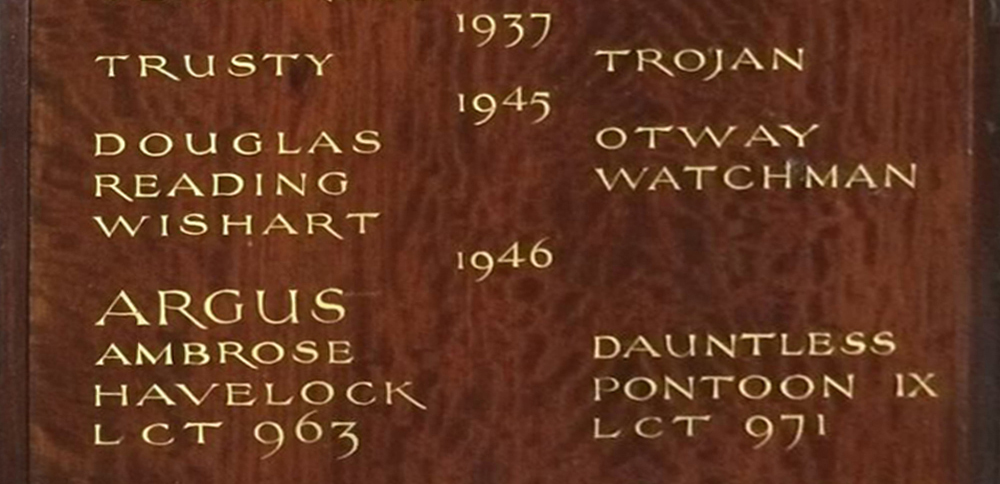
1937
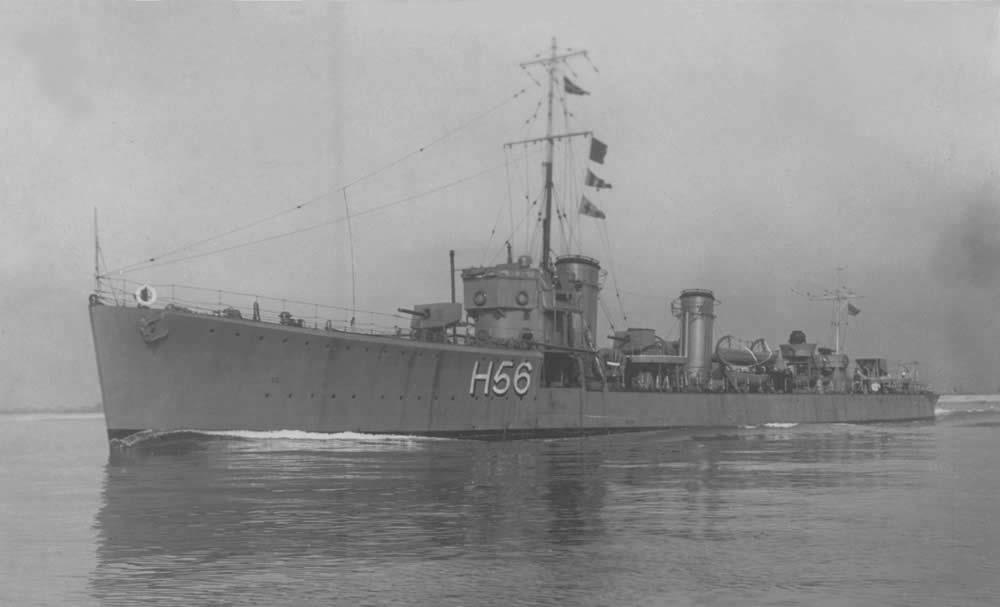 HMS Trusty
HMS Trusty
HMS Trusty – S class destroyer built by J. Samuel White, Cowes, Isle of Wight launched 6th November 1918
Handed over 25th September 1936 to Ward, Inverkeithing in part payment for RMS Majestic which the Royal Navy wanted as a training ship.
www.circlecity.co.uk
www.dreadnoughtproject.org
www.naval-history.net
HMS Trojan – an S class destroyer built by J. Samuel White, Cowes, Isle of Wight launched 20th July 1918
Served in Grand Fleet, Harwich, or in Mediterranean.
Handed over 24the September 1936 to Ward, Inverkeithing in part payment for RMS Majestic which the Royal Navy wanted as a training ship.
www.dreadnoughtproject.org
www.naval-history.net
1945
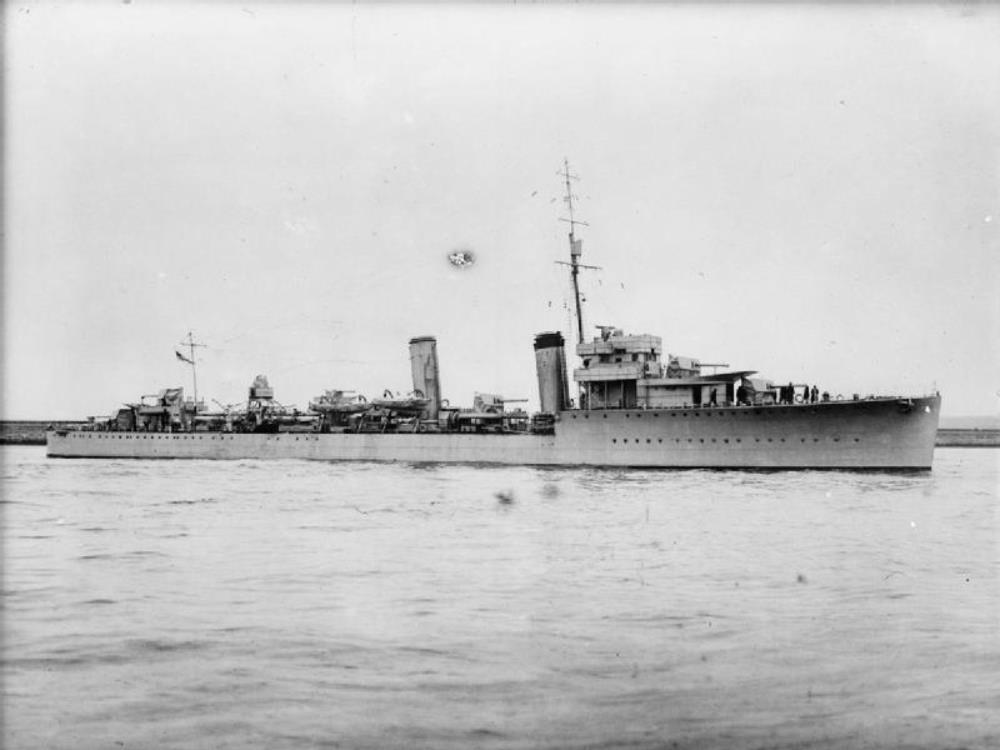 HMS Douglas in 1918
HMS Douglas in 1918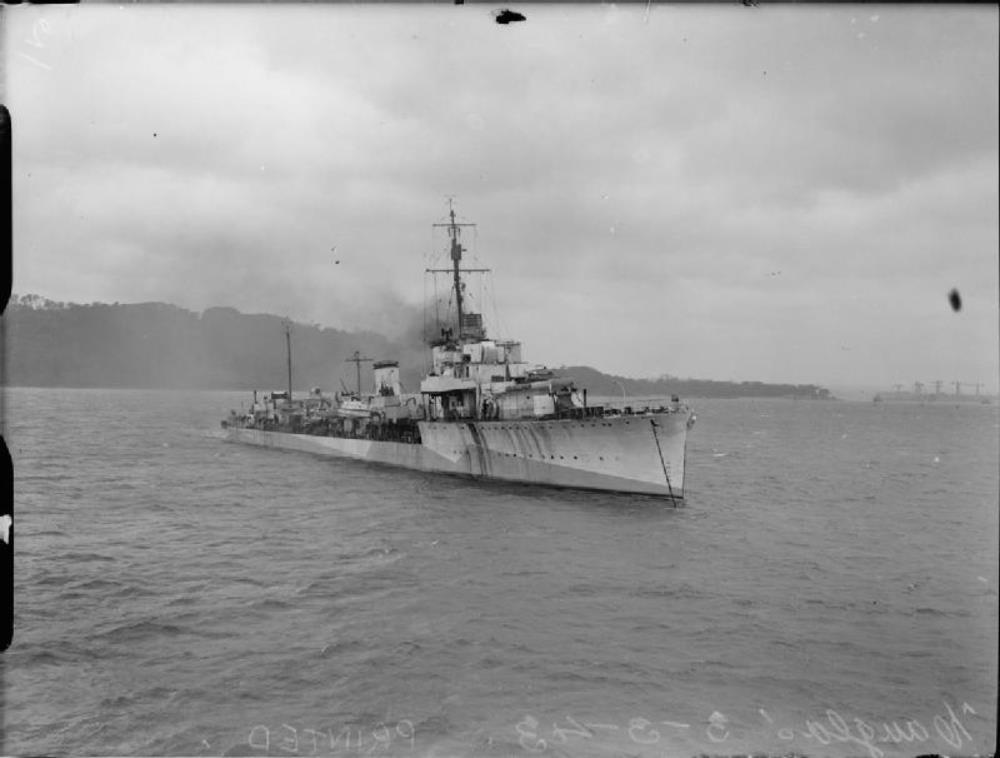 HMS Douglas in 1942
HMS Douglas in 1942
HMS Douglas – Scott-class destroyer leader, built by Cammell Laird, Liverpool, launched 8th June 1918, and joined the 6th Destroyer Flotilla, part of the Dover Patrol, as leader. She took part in the bombardment of Ostend on 17 October 1918, then transferred to the Grand Fleet, joining the 11th Destroyer Flotilla at Scapa Flow.
After WWI she spend many years in reserve before being refitted at Sheerness dockyard in 1928, as leader of the 1st Submarine Flotilla of the Mediterranean Fleet, based at Malta.
In July 1936, following the outbreak of the Spanish Civil War, the Royal Navy sent ships to Spanish harbours to evacuate British subjects, with Douglas being sent to Barcelona in March 1939.[
In September 1939, at the start of the Second World War, Douglas was a member of the 13th Destroyer Flotilla, based at Gibraltar, and escorted Gibraltar bound convoys.
In February 1941, Douglas was transferred to Western Approaches Command. In April depth-charged and sank the U-65 which was attacking convoy HX 121
In September 1941 while escorting Convoy SC 42 Douglas and two destroyers sank one U-boat and drove of others from an attacking wolfpack.
In early 1942 Douglas was converted to a Short-Range Escort vessel – reducing the ship’s gun and torpedo armament to accommodate better anti-submarine weaponry. She then joined the Home Fleet and escorted several Arctic Convoys in 1942 and 1943
Douglas continued in use as a convoy escort until February 1945 when she was paid off into reserve. She was sold for scrap on 20 March 1945 to the British Iron & Steel Corporation (BISCO) who passed the ship on to TW Ward on 20th March 1945.
wikipedia
www.naval-history.net
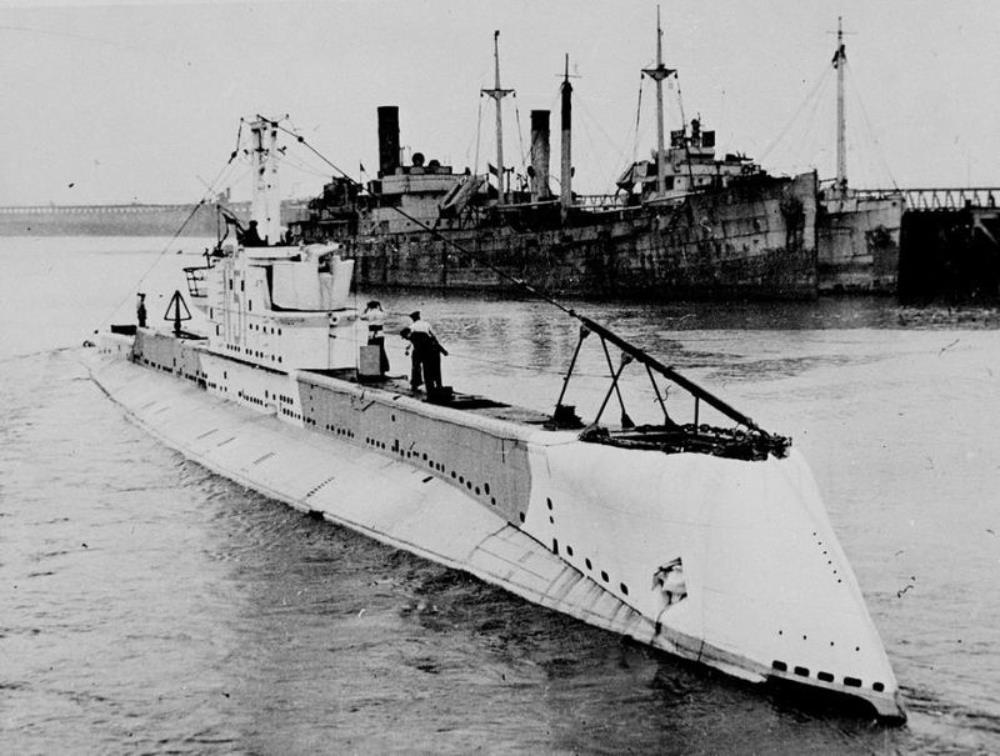 HMS Otway
HMS Otway
HMS Otway – Odin-class submarine built by Vickers-Armstrong, Tyneside, launched 7th September 1926, commissioned into the Royal Australian Navy on 15 June 1927.
After commissioning, Otway and her sister ship Oxley were temporarily assigned to the Royal Navy’s 5th Submarine Flotilla. On 8 February 1928, the two submarines set out for Australia in the longest unescorted voyage undertaken by a British submarine reached Sydney on 14 February 1929 after engine repairs to both ships in Malta
Because of the Great Depression, the two submarines were placed into reserve, but were maintained in operational condition, leaving harbour twice a month for diving exercises.
The ongoing cost of maintenance prompted the Australian government to offer Otway and Oxley to the Royal Navy. They transferred in April 1931.
HMS Otway operated during World War II before leaving service in 1945.
In August 1945 she was transported to Thos W Ward Inverkeithing.
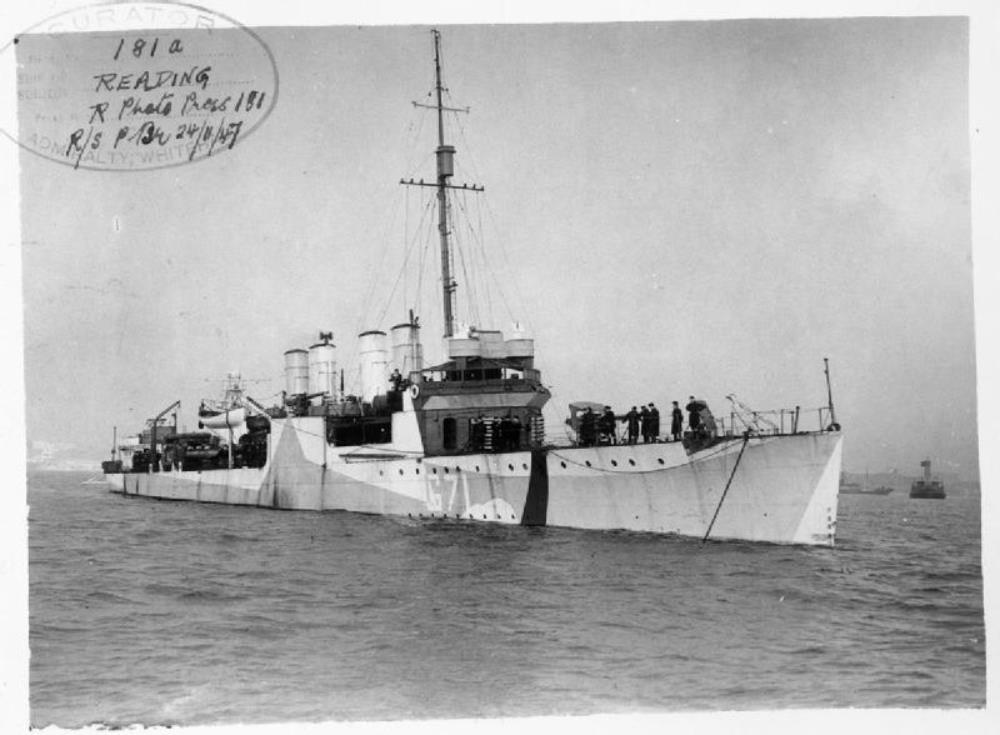 HMS Reading
HMS Reading
HMS Reading started life as USS Bailey – a Clemson-class destroyer built by Bethlehem Shipbuilding Corporation, Squantum, Massachusetts, launched in February 1919, and joined the Pacific Fleet.
Bailey carried out routine operations along the west coast between October 1919 and June 1922. Because of the disturbed conditions on the west coast of Mexico she was assigned to patrol duty there for short periods in 1920. On 16 June 1922 Bailey went out of commission at San Diego, California.
On 30 September 1939 she was recommissioned at San Diego and reported to Destroyer Division 72, Atlantic Squadron. Bailey served with the Squadron in operations off the eastern seaboard until November 1940. On 26 November 1940 she was decommissioned at Halifax, Nova Scotia, and transferred in the destroyer-land bases exchange to Great Britain.
Renamed HMS Reading she was commissioned 26 November 1940 for service with the 5th “Town” Flotilla and arrived at Plymouth, England, 17 December 1940 where she was re-fitted and modified at HMNB Devonport.
Between March and July 1941 she escorted convoys in the Atlantic, working out of Liverpool. In July 1941 she joined the Newfoundland Escort Group with which she remained until May 1942. In this role, she escorted the battleship HMS Prince of Wales with Prime Minister Winston Churchill to the Newfoundland Conference. She was deployed at Placentia Bay with other Royal Navy and United States Navy warships for guard duties during the conference. After the meeting, she temporarily resumed escort duties in the Atlantic.
Between May and October 1942 she underwent a yard overhaul in London, after which her weaponry was removed and she served as a target ship for aircraft from the Air Station, Fearn, Scotland, and continued in this assignment until July 1945 when she was handed over to Thos W Ward Inverkeithing
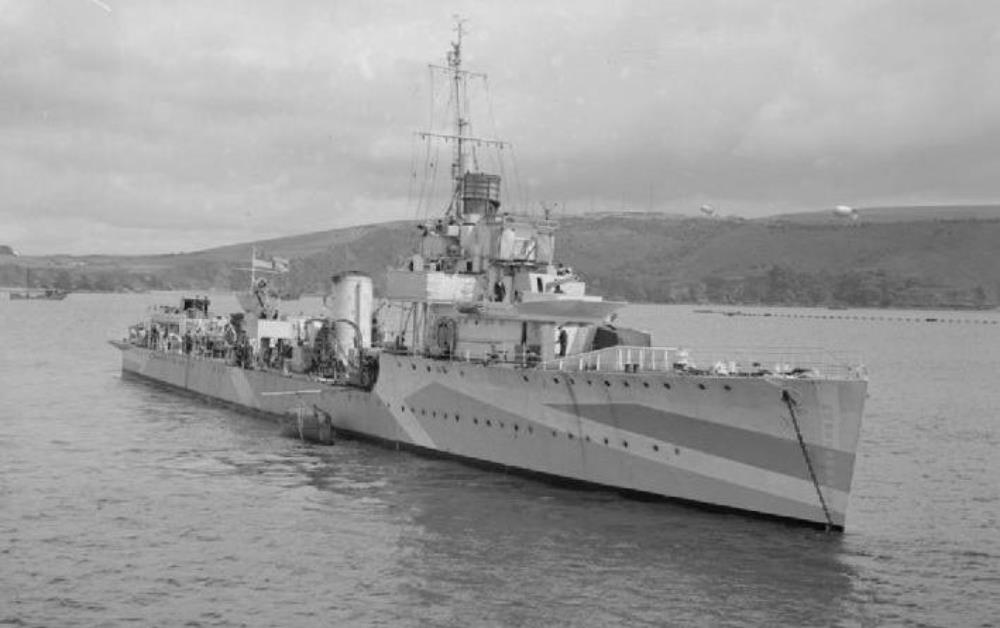 HMS Watchman
HMS Watchman
HMS Watchman – a W-class destroyer, built by John Brown, Clydebank, launched 2nd November 1917, she joined the Grand Fleet, in which she served for the rest of World War I.
She took part in the British campaign against Bolshevik forces in the Baltic Sea during 1919, seeing action against Russian warships. During the Irish Civil War, Watchman patrolled off the coast of Ireland in 1922.
Watchman was later decommissioned, transferred to the Reserve Fleet, and placed in reserve.
When the United Kingdom entered World War II in early September 1939, Watchman was recommissioned and assigned to contraband control and escort duty with the 17th Destroyer Flotilla at Gibraltar.
After a further spell of convoy escort duty in the Mediterranean she transferred to convoy escort and patrol duties in the Western Approaches.
In 1942 Watchman joined North Atlantic convoy operations until August 1942, when she had a special assignment to carry out trials of the prototype Radar Plan Display (PPI).
After continuing her convoy defence duties in the early months of 1943, Watchman was converted into a Long-Range Escort. After acceptance trials she joined the 1st Escort Group on convoys between the United Kingdom and Gibraltar.
In January 1944, Watchman transferred to the Home Fleet to support and defend Arctic before returning to convoy escort duties in the North Atlantic.
In May 1944, the Royal Navy assigned Watchman to escort convoys during Operation Neptune, the assault phase of the upcoming Allied invasion of Normandy continuing until she was released from Neptune in June.
In late June 1944, Watchman was assigned to the defence of coastal convoys and patrol duties in the English Channel.
After the surrender of Germany in May 1945, the Royal Navy decommissioned Watchman and placed her in reserve.
She was sold on 23 July 1945 to Thos W Inverkeithing.
wikipedia
www.naval-history.net
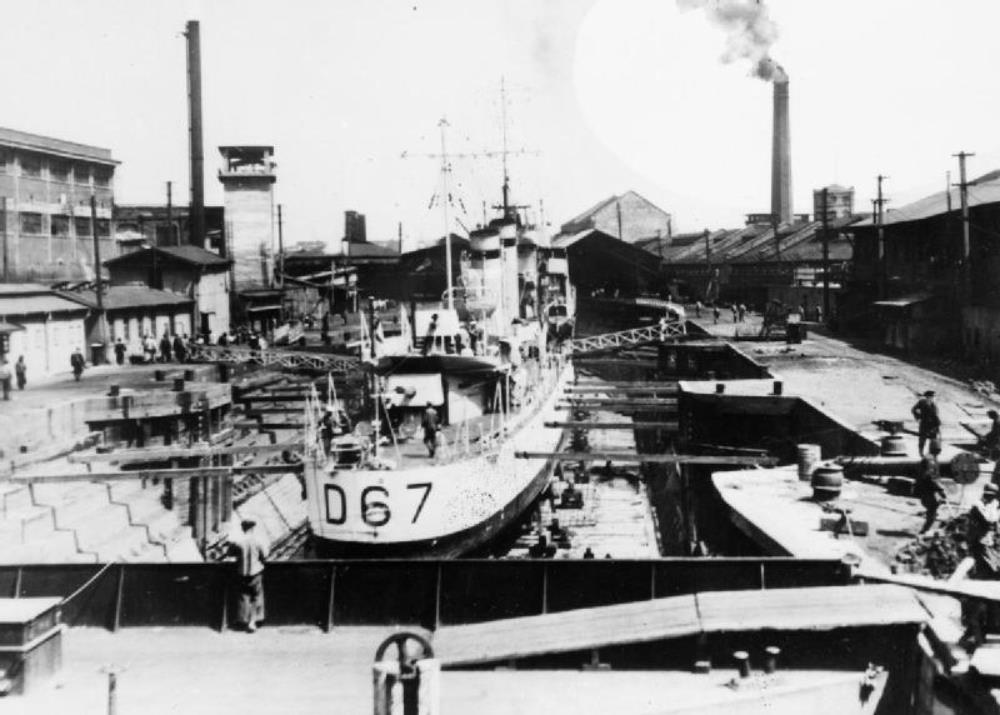 HMS Wishart
HMS Wishart
HMS Wishart – a Thornycroft-modified W-class destroyer, built by John I. Thornycroft & Company, Woolston, Hampshire, launched 18th July 1919.
Upon completion, Wishart was commissioned in June 1920. During the interwar period she served first in the Atlantic Fleet and then in the Mediterranean Fleet, and while in the latter had Lord Louis Mountbatten as her commanding officer for a time.
When the United Kingdom entered World War II in September 1939, Wishart was stationed at Gibraltar, tasked with contraband control duties and convoy escort in the Mediterranean Sea and North Atlantic Ocean
On 31 July 1940, she was part of the escort as the aircraft carrier Argus delivered aircraft to Malta in Operation Hurry. Wishart then remained with Force H as the aircraft carrier Ark Royal launched airstrikes against Italian airfields at Cagliari on Sardinia on 2 August 1940. Then in August 1940, she formed part of the screen for the battleship Valiant, the aircraft carrier Illustrious, and the light cruisers Calcutta and Coventry, as they reinforced the Mediterranean Fleet in Alexandria.
In September 1940, Wishart was on convoy duties at Gibraltar, then in November 1940 escorted the battleship Barham, the heavy cruiser Berwick, the light cruiser Glasgow, and the destroyers Encounter, Gallant, Greyhound, and Griffin en route to Alexandria. In November she then escorted Argus while she delivered more aircraft to Malta, then Force H ships – Ark Royal, the battlecruiser Renown, the light cruiser Despatch, and the destroyers Faulknor, Firedrake, Forester, Fury, Kelvin, and Jaguar – covering a convoy to Alexandria.
Wishart spent the first quarter of 1941 operating on North Atlantic convoy duty from Gibraltar.
From March to June 1941, she provided local convoy escort duty at Freetown in Sierra Leone.
In June 1941, Wishart returned to Gibraltar to resume her convoy escort duties there.
In July 1941, Wishart returned to the United Kingdom for refit and conversion into a long-range escort, returning to Gibraltar at the end of the year.
On 20 March and again on 27 March 1942, Wishart joined Force H covering the aircraft carriers Argus and Eagle as they delivered aircraft to Malta.
On 19 April 1942, she covered the U.S. Navy aircraft carrier USS Wasp while she delivered aircraft to Malta.
Wishart, the destroyer Wrestler, and aircraft of the Royal Air Force’s No. 202 Squadron sank the German submarine U-74 with all hands east of Cartagena, Spain, on 2 May 1942.
On 8 May 1942, she escorted Eagle, and Wasp as they delivered aircraft to Malta. On May 1942 she escorted Argus and Eagle as they delivered aircraft to Malta. On 2 June 1942, she escorted Eagle as she delivered aircraft to Malta. On 8 June, Wishart began another such operation, as Eagle again delivered aircraft to Malta.
Wishart returned to convoy escort duties at Gibraltar on 18 June 1942. She continued on such duties until 10 August 1942, when she again detached from them to take part in Operation Pedestal as a part of Force Z, supporting another Malta-bound convoy. On 28 October 1942 she took part in Operation Train, covering the aircraft carrier Furious on the final aircraft delivery run to Malta.
In November 1942, Wishart was assigned to duty escorting military convoys in the North Atlantic and Mediterranean carrying troops and supplies for Operation Torch, the Allied invasion of French North Africa. On 7 November, she, Velox, and the frigate Spey joined the escort of an assault convoy bound for North Africa for the invasion and detached to stand by the U.S. Navy attack transport USS Thomas Stone after an Axis submarine torpedoed Thomas Stone; after the troops had disembarked into landing craft or been taken aboard Spey, Wishart escorted Thomas Stone while a tug towed her to Algiers in Algeria for repairs. On 21 December 1942, Wishart assisted in search-and-rescue operations after the German submarine U-562 torpedoed and sank the troop transport MV Strathallan in the Mediterranean killing 16 of those aboard and leaving 5,106 survivors.
During the first half of 1943, Wishart continued her convoy escort duties at Gibraltar but also supported Allied military operations ashore in North Africa. In July 1943, she was assigned to support Operation Husky, the Allied invasion of Sicily. For the rest of 1943, she was deployed for convoy defence in the western and central Mediterranean.
In February 1944, Wishart captured 48 survivors of U-761 which was sunk by aircraft near Tangier.
Wishart remained on convoy defence duty at Gibraltar until January 1945, when the Royal Navy decided to withdraw her from service and she steamed to the United Kingdom for deactivation.
Wishart was decommissioned in February 1945, and sold to Thos W Ward on 20 March 1945, arriving under tow in August 1945.
wikipedia
www.naval-history.net
1946
 HMS Argus in 1918
HMS Argus in 1918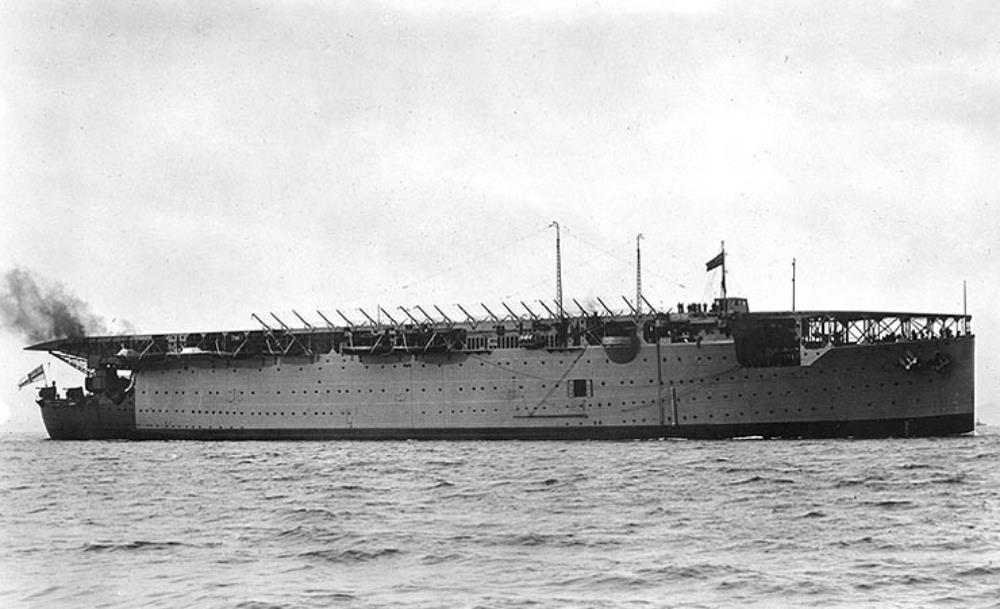 HMS Argus in 1920’s
HMS Argus in 1920’s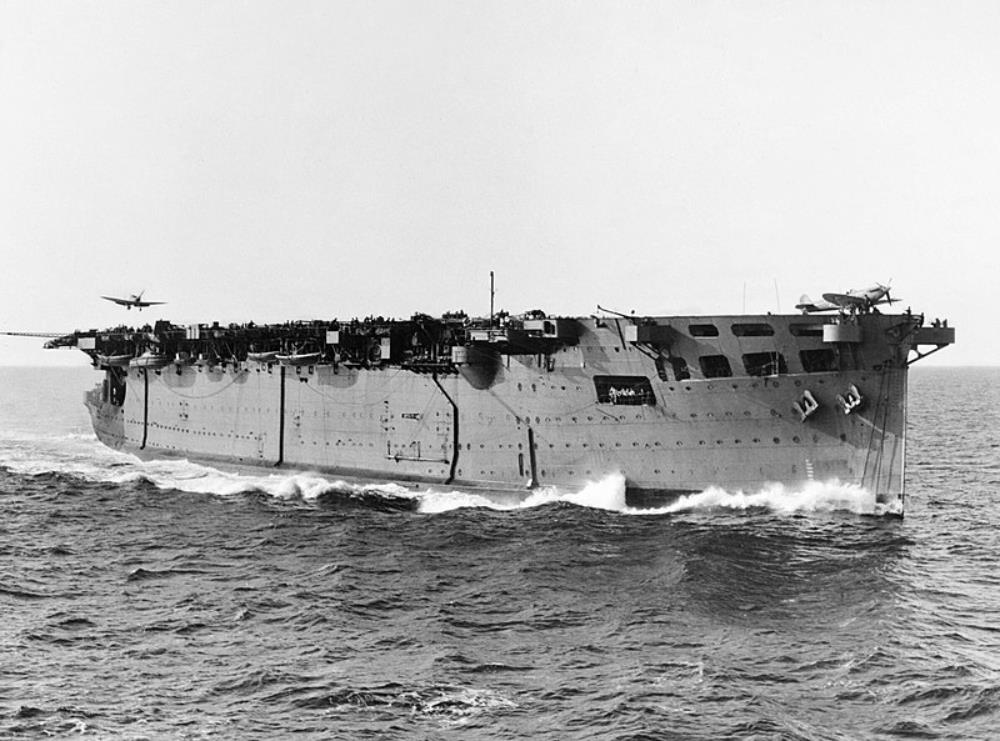 HMS Argus in 1942
HMS Argus in 1942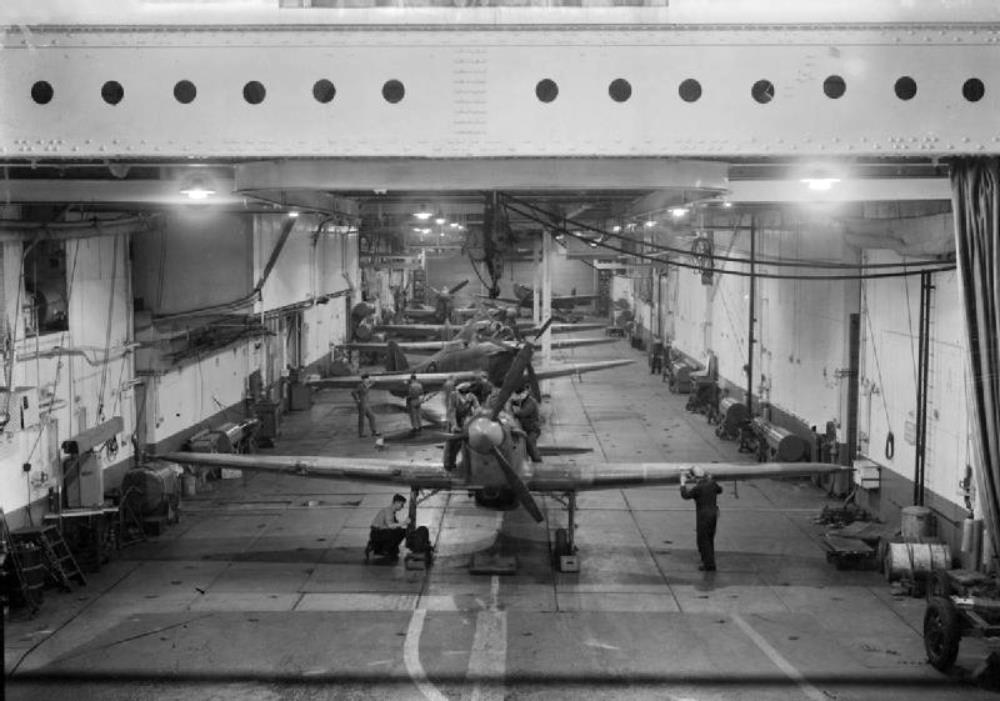 HMS Argus hanger deck 1942
HMS Argus hanger deck 1942
HMS Argus was a British aircraft carrier that served in the Royal Navy from 1918 to 1944.
She was converted from an ocean liner that was under construction when the First World War began and became the first example of the standard pattern of aircraft carrier, with a full-length flight deck that allowed wheeled aircraft to take off and land. After commissioning, the ship was involved for several years in the development of the optimum design for other aircraft carriers. Argus also evaluated various types of arresting gear, general procedures needed to operate a number of aircraft in concert and fleet tactics. The ship was too top-heavy as originally built and had to be modified to improve her stability in the mid-1920s. She spent one brief deployment on the China Station in the late 1920s before being placed in reserve for budgetary reasons.
Argus was recommissioned and partially modernised shortly before the Second World War and served as a training ship for deck-landing practice until June 1940. The following month she made the first of her many ferry trips to the Western Mediterranean to fly off fighters to Malta; she was largely occupied in this task for the next two years.
The ship also delivered aircraft to Murmansk in Russia, Takoradi on the Gold Coast, and Reykjavík in Iceland. By 1942, the Royal Navy was very short of aircraft carriers and Argus was pressed into front-line service despite her lack of speed and armament. In June, she participated in Operation Harpoon, providing air cover for the Malta-bound convoy. In November, the ship provided air cover during Operation Torch, the invasion of French North Africa and was slightly damaged by a bomb. After returning to the UK for repairs, Argus was used again for deck-landing practice until late September 1944. In December, she became an accommodation ship and was listed for disposal in mid-1946. Argus was sold in late 1946 and scrapped the following year.
wikipedia
www.naval-history.net
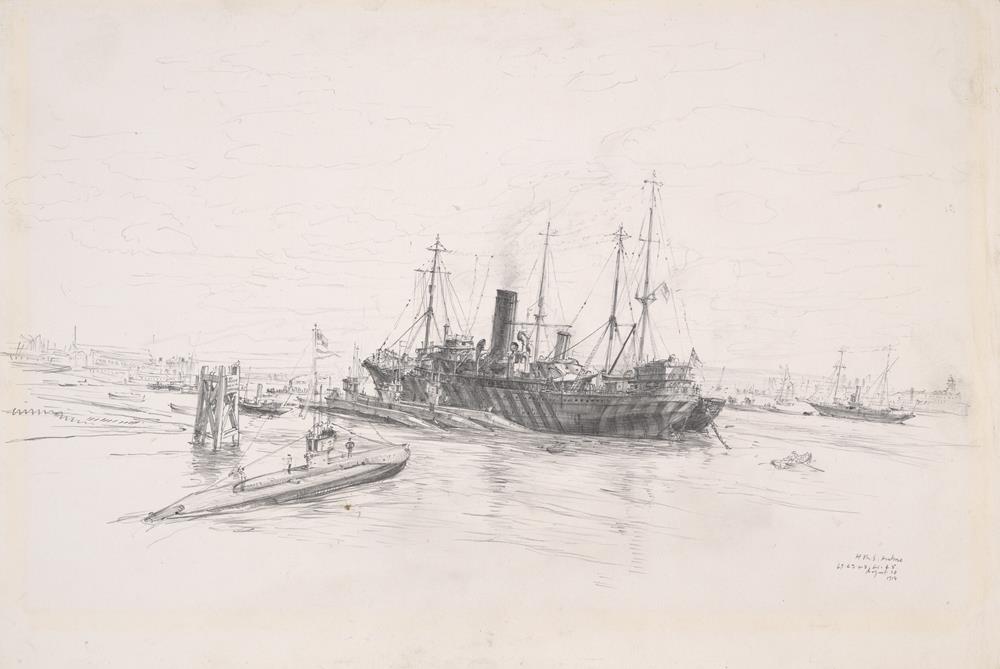 HMS Ambrose
HMS Ambrose
HMS Ambrose was a cargo and passenger liner bought by the Admiralty from the Booth Steamship Company early in World War I and converted into an armed merchant cruiser. Later in the war she was converted into a submarine depot ship and spent most of the 1920s supporting submarines in the Far East. Upon her return home in 1928, Ambrose was placed in the Reserve Fleet.
She was renamed HMS Cochrane on 1 June 1938 and served as a depot ship during World War II and was paid off on 1 March 1946. The ship was sold for scrap in August and arrived at the breaker’s yard at Inverkeithing on 13 November 1946.
wikipedia
www.naval-history.net
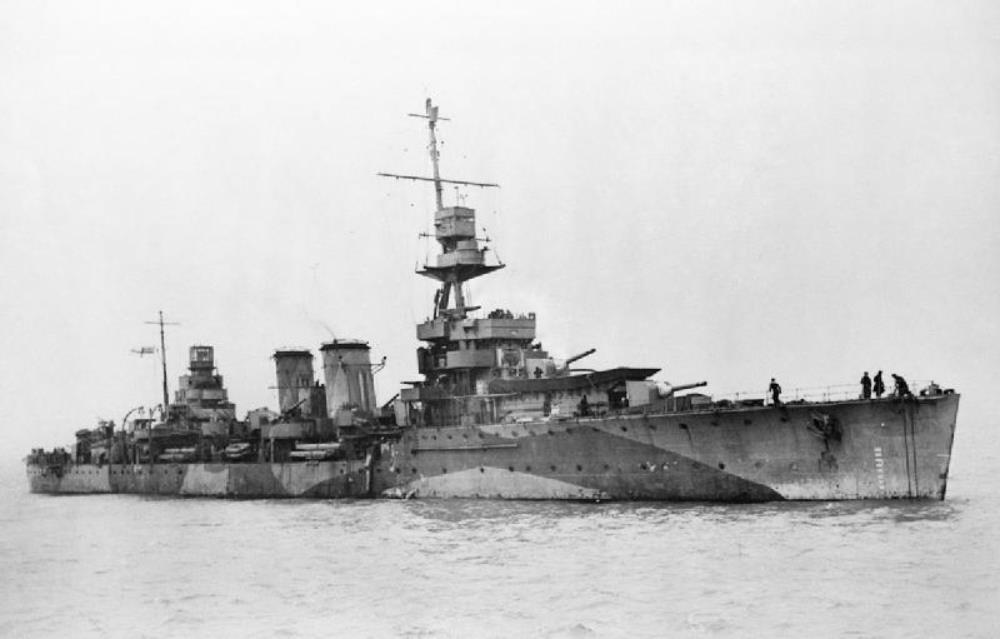 HMS Dauntless
HMS Dauntless
HMS Dauntless – a Danae-class light cruiser, built by Palmers Shipbuilding and Iron Company, of Jarrow, launched 10th April 1918
Completed too late to see action in the First World War, in 1919 she was assigned to operate in the Baltic Sea against the Bolshevik revolutionaries in Russia. She was then on detached service in the West Indies. Following this assignment she was attached to the 1st Light Cruiser Squadron of the Atlantic Fleet for the following five years. Dauntless was a member of the Cruise of the Special Service Squadron, also known as the ‘Empire Cruise’, of 1923/24. Following this tour, she went with the squadron to the Mediterranean for the next few years.
In May 1928 Dauntless was recommissioned and assigned to the North America and West Indies Station, based at the Royal Naval Dockyard in Bermuda. She ran aground on 2 July 1928 on the Thrum Cap Shoal, off Halifax, Nova Scotia, Canada, and was badly damaged. She was abandoned by most of her 462 crew, the officers remaining on board.
Subsequently all of her guns and torpedo tubes and much of her other equipment had to be removed to lighten her. She was finally re-floated on 11 July 1928 and towed off by her sister ship HMS Despatch and a number of tugs. She was repaired throughout 1929 and was reduced to the reserve.
In 1930 she was transferred back to the America and West Indies Station. During 1931-1933 she served with the South American Division, and in 1934 she relieved the cruiser Curlew in the Mediterranean and was reassigned to the 3rd Cruiser Squadron. In 1935 she returned to Britain to be paid off into the reserve.
On the outbreak of the Second World War, Dauntless was recommissioned and joined the 9th Cruiser Squadron with the South Atlantic Command. In December, the squadron, including Dauntless, was transferred to the China Station, and in March 1940 Dauntless operated as a unit of the British Malaya Force while in the Indian Ocean. She operated mainly off Batavia, keeping watch on German merchant ships in the Dutch East Indies harbours. On 15 June 1941 she collided with the cruiser Emerald off Malacca and had to put into Singapore for repairs, that were eventually completed on 15 August.
In February 1942 Dauntless returned to Britain, and underwent a refit at Portsmouth. Following this, she was transferred to the Eastern Fleet, and in November was docked in the Selborne dry dock at Simonstown, South Africa, until January 1943. She was then used as a training ship, and in February 1945 was again reduced to the reserve.
She was sold to be broken up for scrap on 13 February 1946, and in April that year was broken up at the yards of Thos W Ward, of Inverkeithing.
wikipedia
www.naval-history.net
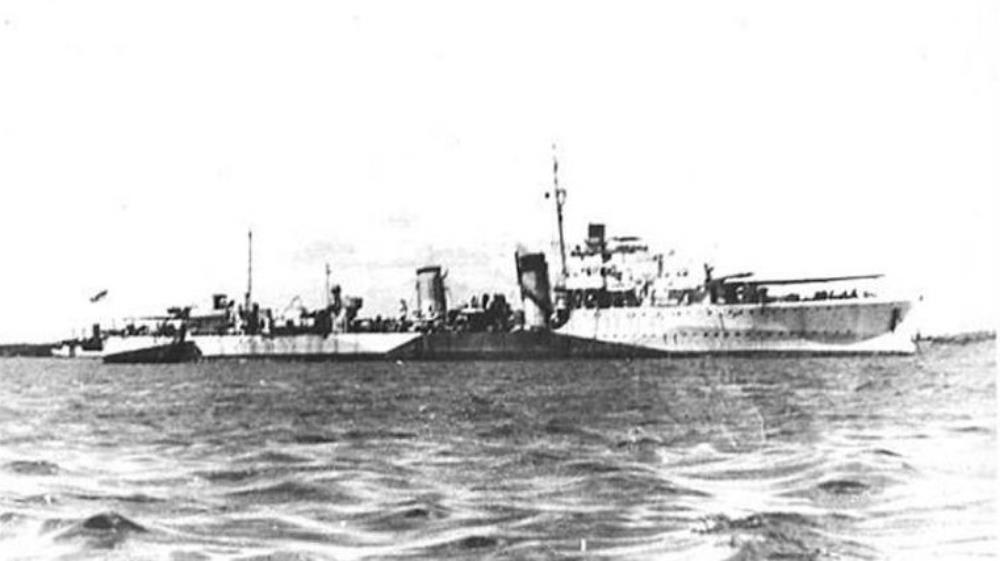 HMS Havelock
HMS Havelock
HMS Havelock – an H-class destroyer that had originally been ordered by the Brazilian Navy with the name Jutahy in the late 1930s, but was bought by the Royal Navy after the beginning of the Second World War in September 1939 and later renamed.
She participated in the Norwegian Campaign in May 1940 and was assigned to convoy escort and anti-submarine patrols with the Western Approaches Command afterwards. The ship was briefly assigned to Force H in 1941, but her anti-aircraft armament was deemed too weak and she rejoined Western Approaches Command. Havelock became flotilla leader of Escort Group B-5 of the Mid-Ocean Escort Force in early 1942 and continued to escort convoys in the North Atlantic for the next two years. The ship was converted to an escort destroyer and sank one submarine during the war. After the end of the war, she escorted the ships carrying the Norwegian government in exile back to Norway and served as a target ship through mid-1946. Havelock was scrapped beginning in late 1946.
LCT 963 – Landing Craft Tank built by Alexander Findlay & Co. Ltd., Old Kilpatrick, completed on 4th November 1943.
(N.B. the US Navy used the same designation for their landing craft, so there is also an LCT 963 which was built by Mare Island Shipyard Vallejo, California USA, launched, 15 January 1944, lost due to explosion at West Loch, Pearl Harbor, 21 May 1944.)
www.clydeships.co.uk
uboat.net
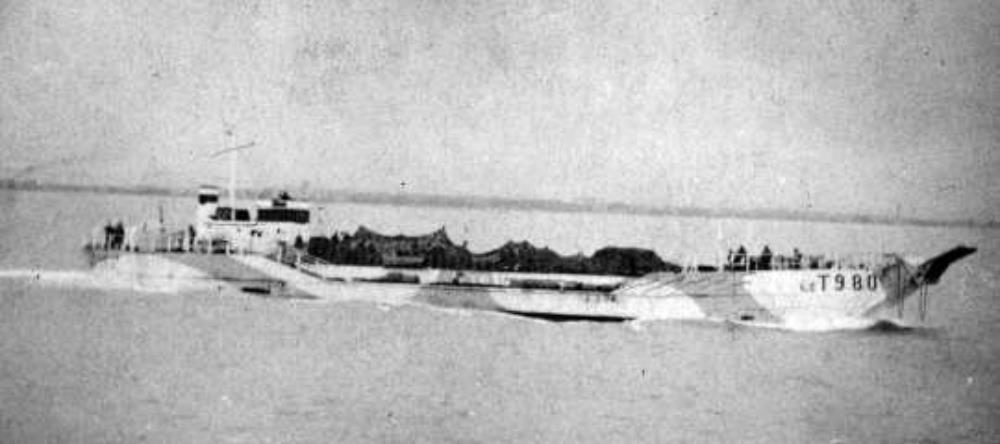 LCT 980 – probably similar to LCT971
LCT 980 – probably similar to LCT971
LCT 971 – Landing Craft Tank (LCT) (Mk 4), built by Maclellan (Bo’ness, U.K.), ordered 13 Nov 1942
Image from www.combinedops.com
Pontoon IX – Unknown
| < 1931-1936 | Δ Index | 1946-1949 > |